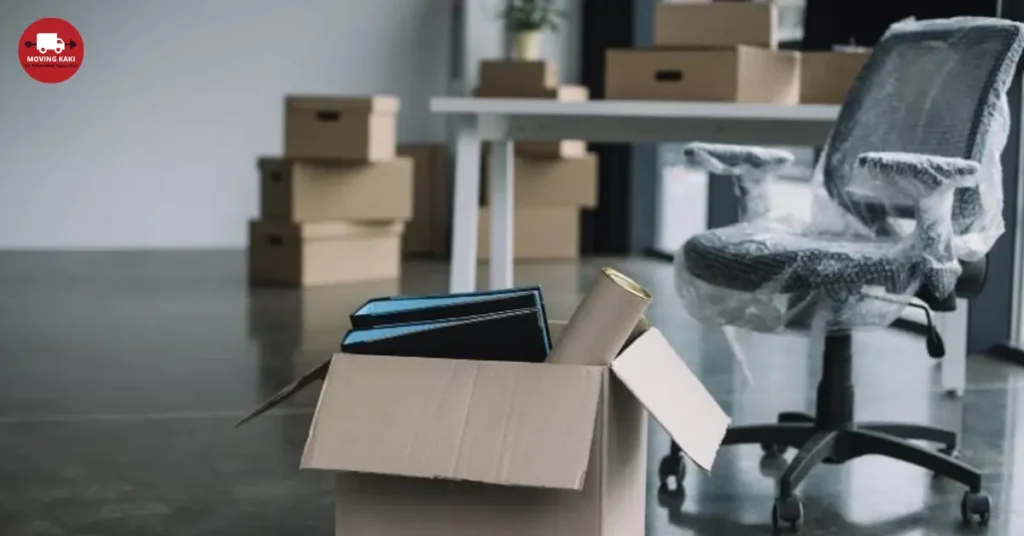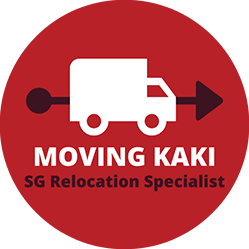Moving to a new office can be both exciting and overwhelming. This moving process involves careful planning, coordination, handling IT equipment, and time management. We’ve shared this office relocation checklist to guide you through each step, from the initial planning phase to settling in at the new location, which will help to minimise disruption for your business and employees.
1- Plan 3–6 Months Before Moving Office
Preparations should begin at least three to six months before the scheduled moving date. This phase is all about getting the foundation right so the rest of the move can run smoothly.

Assign a Moving Manager or Team
Start by assigning a moving manager or creating a small team to manage the move. This person, or group, will take charge of coordinating all moving-related tasks, communicating with vendors and employees, and make sure everything stays on schedule. They’ll also solve any issues that arise along the way. If you have a big company, it’s helpful to include department representatives to keep communication flowing throughout the organisation.
Set a Budget
Setting a budget is another important step. It gives you a clear idea of what you can afford and helps prevent financial surprises later. Your budget should cover professional movers, new furniture or equipment if needed, office renovation costs, and IT infrastructure upgrades. You should also include a contingency buffer, around 10 to 15 percent of your total budget, for unexpected expenses, such as delays, repairs, or additional supplies.
Create a Timeline
Creating a moving timeline is equally important. This timeline should outline when packing starts, when internet and phones will be disconnected and reconnected, when the official moving days are, and when your team is expected to settle into the new space. Having a phased schedule with clear deadlines keeps everyone on the same page and helps avoid delays. You can manage this timeline using a spreadsheet or project management software.
Inform the Landlord
Lastly, don’t forget to inform your current landlord. Check your lease agreement for the required notice period, which is often between 30 and 90 days, and understand any conditions for leaving the property. You may need to return the office to its original condition, so allow time for cleaning or minor repairs. Schedule a final walk-through in advance, as it can help you avoid disputes or losing your deposit.
2- Organising the Move (1–3 Months Before)
As moving day gets closer, it’s time to start executing the plan you made earlier. The 1 to 3 months before the move are all about securing services, updating important information, and making sure everyone involved is on the same page.

Hire Professional Movers
First, hire professional office movers. Don’t just go with the first one you find; look for movers who specialise in office relocations. These companies understand the procedure of handling office furniture and sensitive equipment with minimal disruption. Request quotes from at least three providers, check customer reviews, and make sure they’re fully insured. Confirm the services they include; some may offer packing, while others stick strictly to transport.
Communicate with Staff
Communication with your staff is very important during this period. Let them know the new office address, the moving date, and what they’ll be responsible for. Some companies ask employees to pack their own desks or personal items. Be transparent about any expected changes to their routine, such as adjusted work hours or a new commuting route.
Notify Service Providers and Vendors
Next, notify all your service providers and vendors. These include internet and phone service providers, utility companies, cleaning crews, security teams, and any businesses supplying or maintaining equipment. Give them advance notice of the move and schedule cut-off and start-up dates accordingly, so there are no delays.
Update Your Business Address
Also, update your business address across all platforms. Start with your website, Google Business profile, and social media accounts. Then move on to printed materials like business cards, brochures, and letterheads. Also, inform banks, HMRC, or tax authorities, and make sure your new address appears correctly on invoices, email signatures, and client communications.
Check on the IT Team
Finally, plan your IT move carefully. Work closely with your internal IT team or an external provider to minimise disruptions. Start by backing up all company data. Then make a plan to disconnect, transport, and reconnect all computers, servers, phones, and other hardware. You’ll also need to set up internet and network access at the new office ahead of time. Ideally, everything should be tested and ready before staff arrive, so they can get back to work without delays.
3- Packing and Labelling (2–4 Weeks Before)
Packing and labelling are important steps in the office relocation Checklist, and help with a smooth transition to your new space, and avoid any confusion.

Declutter
With just a few weeks left before the move, it’s time to start packing and preparing your space. Start with a deep decluttering. Moving offices is the perfect opportunity to streamline your setup. Go through old files, damaged furniture, and outdated electronics. If something is no longer needed or no longer works, either recycle it or donate it if it’s still usable. Reducing the number of items you take to the new office will save time and money, and give your new space a cleaner, more organised start.
Start Packing Non-Essentials
Once you’ve cleared the clutter, start packing up non-essential items. These include anything that your team doesn’t use daily, such as archived files, extra office supplies, wall art, or decorations. Getting these out of the way early frees up time to focus on essential systems closer to the moving date.
Label Everything Clearly
Clear labelling is important to avoid chaos during unpacking. Every box should be marked with the department it belongs to, a brief description of what’s inside, and where it should go in the new office. You can also use a colour-coded label system to make sorting easier, especially if you have a large team or several departments. This simple step can make a big difference when it’s time to get everything set up again.
Secure Sensitive Items
For sensitive or valuable items, such as confidential files, laptops, and important documents, it’s best to pack them separately. Keep these under the supervision of a trusted manager or IT staff member, and don’t mix them with general office supplies. Taking extra care here protects your data and prevents unnecessary security risks during the transition.
4- Moving Week (1 Week Before)
As moving week arrives, it’s all about final confirmations and making sure everything is in place for a stress-free office move list.

Confirm Final Details
Start by double-checking every detail with your moving company. Confirm the date, arrival time, the number of crew members, and whether any special equipment or instructions are needed. Reach out to building management at both your current and new locations to confirm things like access hours, elevator bookings, parking arrangements, and any building rules that might affect the move. Additionally, if your IT team or provider requires early access to set up systems, ensure that this is scheduled and approved in advance.
Create a Moving Day Plan
Now is the time to create a clear and thorough moving day plan. Assign roles so everyone knows what to expect. Decide who will supervise the movers at each location, who will be responsible for greeting them and showing them around, and who will direct the placement of boxes and furniture. It’s also wise to appoint someone who can handle any last-minute issues, whether it’s a misplaced box or a delay in access. Having a plan will help your team stay calm and in control on a busy, high-stress day.
5- Moving Day
Moving day is all about execution. Make sure everything is organised and the manager is on the office site to handle everything.

Be Present and Organised
Moving day is all about execution, and it starts with being present and organised. Your designated move managers should be physically on-site at both the old and new locations to oversee the process. They should have printed copies of the office layout, moving checklists, and contact numbers for the movers, IT support, and building management. These documents will come in handy throughout the day and help to stay on track and avoid confusion.
Direct the Movers
As movers begin unloading, it’s important to direct them clearly and efficiently. Use your pre-made floor plans and clearly labelled boxes to guide them. This will make sure that each item ends up in its correct room or workstation, which will save you from a disorganised mess later.
Keep Essentials Easily Accessible
Lastly, don’t forget to keep the essentials easily accessible. Make sure internet routers, modems, and office phones are unpacked and connected early on so the office can get back online quickly. Other team necessities, such as chargers, pens, notebooks, first aid supplies, and even the coffee machine, should be among the first things unpacked.
Post Move Checking
Once the move is complete, start by checking that your internet, phones, and computers are working properly. Then let your team unpack and settle in. A little personal touch at each desk can help everyone feel more comfortable. Check for any missing or damaged items and gather quick feedback to see if anything needs adjusting. Don’t forget to celebrate the successful move! Even a small team lunch, coffee break, or a simple thank-you gesture can go a long way in boosting morale and showing appreciation for everyone’s effort and patience. After all the planning and hard work, your team deserves a moment to enjoy the new space together.
Conclusion
A successful office move is all about preparation and clear coordination. By following each step of this moving office checklist, you can minimise disruptions and keep your business running smoothly. Taking time to organise, communicate with your team, and manage everything to ensure a smooth transition. With everything in place, your business can settle into its new space and thrive.
If you’re planning a move in Singapore, contact our reliable moving company to make the entire process easier and help your business settle quickly and thrive in its new space.
FAQs
How early should I start planning an office move?
Start at least 3 to 6 months in advance. This gives you enough time to organise the move, notify everyone, and avoid last-minute stress.
What’s the most important part of an office move?
Planning and communication. A clear timeline, assigned responsibilities, and regular updates help everything go smoothly.
How do I choose a reliable moving company?
Look for companies with office relocation experience, positive reviews, and full insurance coverage. Always get multiple quotes before deciding.
What’s the best way to organise packing?
Use colour-coded labels, label each box by department and destination, and pack non-essentials first to stay organised.

